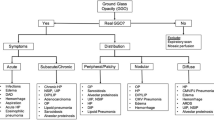Abstract
In the closing half of the past century a wide variety of approaches were developed to visualise infection and inflammation by gamma scintigraphy. Use of autologous leucocytes, labelled with indium-111 or technetium-99m, is still considered the "gold standard" nuclear medicine technique for the imaging of infection and inflammation. However, the range of radiopharmaceuticals used to investigate infectious and non-microbial inflammatory disorders is expanding rapidly. Developments in protein/peptide chemistry and in radiochemistry should lead to agents with very high specific activities. Recently, positron emission tomography with fluorine-18 fluorodeoxyglucose has been shown to delineate infectious and inflammatory foci with high sensitivity. The third millennium will witness a gradual shift from basic (non-specific) or cumbersome, even hazardous techniques (radiolabelled leucocytes) to more sophisticated approaches. Here a survey is presented of the different approaches in use or under investigation.
Similar content being viewed by others
Author information
Authors and Affiliations
Additional information
Electronic Publication
Rights and permissions
About this article
Cite this article
Rennen, H.J.J.M., Boerman, O.C., Oyen, W.J.G. et al. Imaging infection/inflammation in the new millennium. Eur J Nucl Med 28, 241–252 (2001). https://doi.org/10.1007/s002590000447
Published:
Issue Date:
DOI: https://doi.org/10.1007/s002590000447




